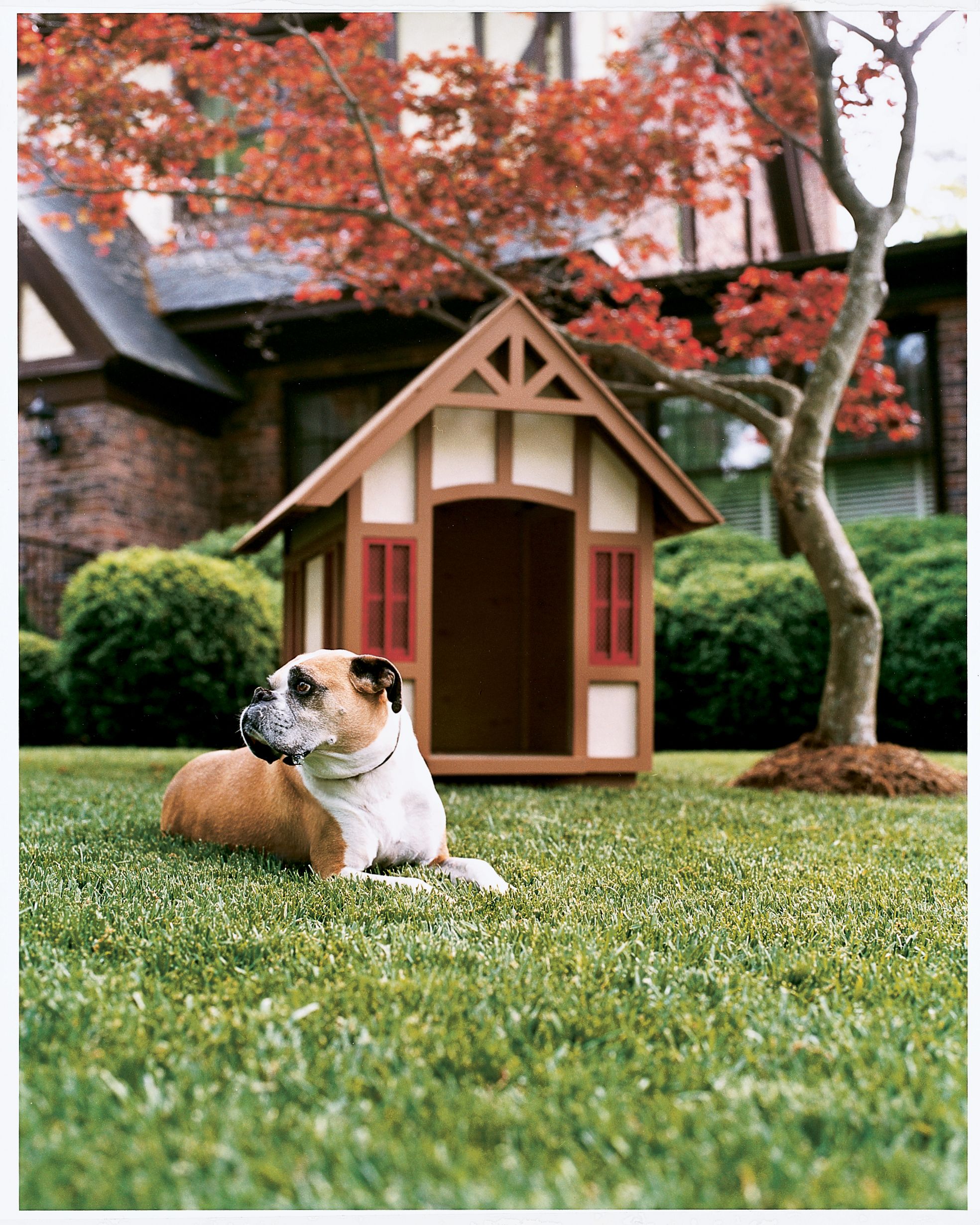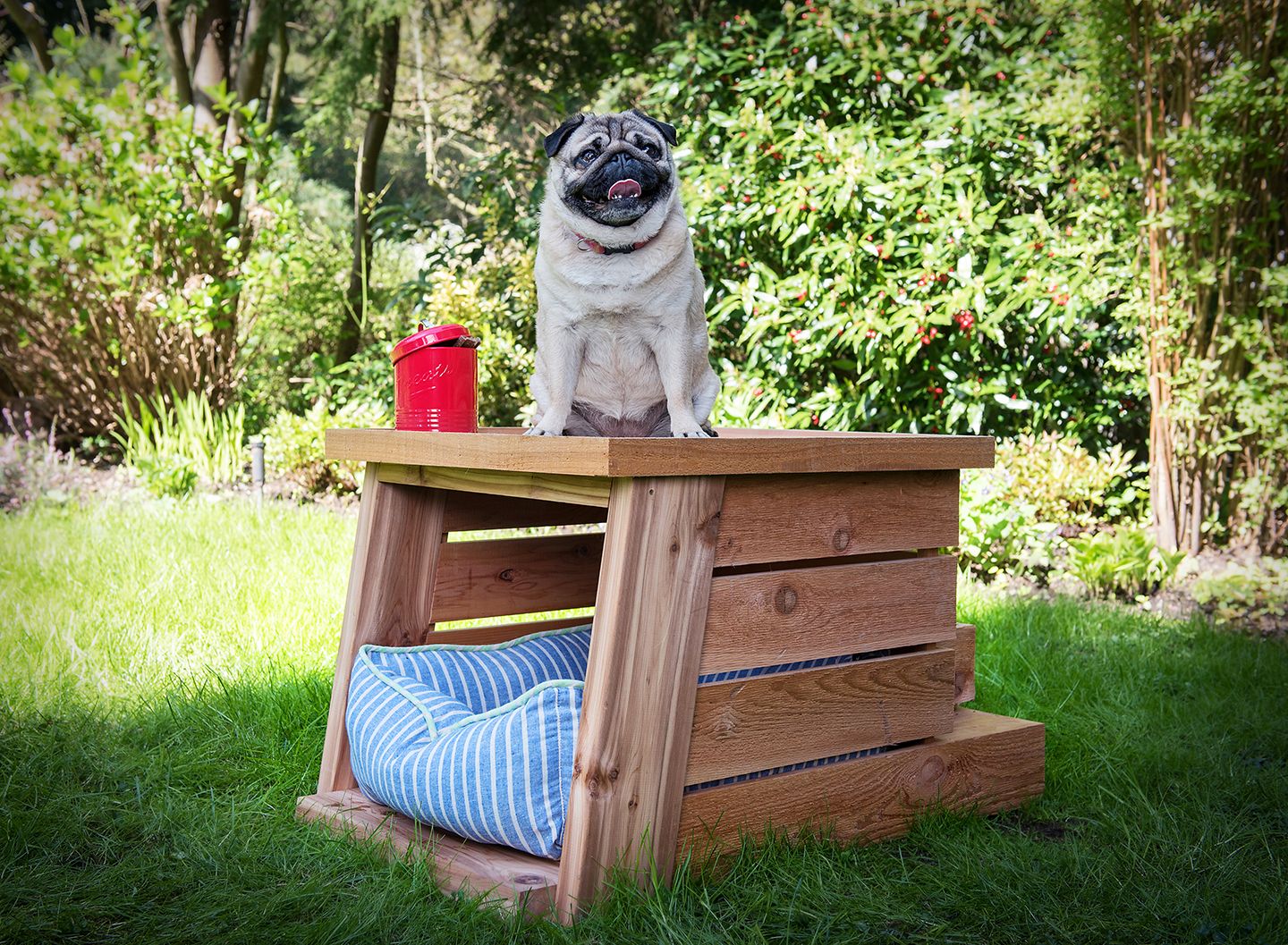Want to create a humble home for your pup?
You’ll want quality materials if you’re going to build a doghouse that stands the test of time and a pup’s rambunctiousness—but you shouldn’t be expected to mill tiny moldings and other architectural details.
Good news: Many stock materials are readily available at building supply outlets, hardware stores, and craft shops.
Here are some elements of the doghouse to consider:
- Roofing: Adhesive asphalt sheeting is ideal for weatherproofing the roof, and it can be cut into strips and laid to impart the look of shingles. Paint it gray and—voilà!—you’ve got (faux) slate.
- Siding: Lauan, or Philippine, mahogany is perfect for making mini-clapboards. The ¼-inch-thick sheets, which come smooth and paint-ready on both sides, can be scored with a utility knife and snapped.
- Walls: Unblemished and paint-ready, birch plywood makes sturdy walls. To build the turret roof on a Queen Anne-style doghouse, use bendable plywood that’s available at any good lumberyard or by special order.
- Floors and Windows: Pressure-treated plywood is strong and weather-resistant, which makes it a tough, durable flooring material. For windows, ¼-by-1½-inch solid wood lattice strips make perfect panes.
- Fasteners: Galvanized deck screws are essential for the base of a doghouse—which will endure the most contact with water. Standard steel brad nails are sufficient for siding, moldings, and roofing.
- Paint and Caulk: Three coats of exterior latex paint will protect against the elements. Also, exterior paintable caulk is good for sealing around windows. Both of these products are ideal for protecting against moisture and rot.
Doghouse Dimensions

We know that most dogs wouldn’t give up their indoor digs to live in a doghouse unless perhaps it was made of cheddar cheese. But if you’re building a doghouse for your buddy to use as shelter, there are a number of factors to take into consideration.
Consider Your Dog’s Size
A doghouse needs to be big enough inside for its occupant to stand up, turn around, and lie down comfortably. Measure your dog’s seated height from the top of his or her head to the ground.
The ceiling height should be 1 to 3 inches higher than the dog’s head. With doghouses, bigger isn’t necessarily better, because excess space won’t properly hold in the dog’s body heat to keep things cozy.
Note that even the most state-of-the art doghouse can’t protect your dog from the life-threatening effects of frigid temperatures. Be a friend to your best friend: exercise common sense and humanity and don’t leave your dog outside when it’s freezing.
Doghouse Roof Structure
The house should sit on a platform raised an inch or two above the ground. That will not only keep the floor from getting too cold, it will also keep the structure away from pooling water— since your doghouse probably won’t have flood insurance.
The roof should be pitched to shed rain and protected with several coats of exterior porch paint.
Keeping the Doghouse Warm
Include some kind of nesting material—blankets, carpet, straw, hay, shredded paper, pine shavings, or anything that will keep your pooch comfortable—but blankets and carpet can freeze when wet, so change them frequently. (And again, dogs should not be left outside in freezing temperatures.)
In the cooler months, a doggy door in the form of a burlap or canvas flap will work to help keep drafts out. A word of caution: Make absolutely sure the flap doesn’t seal too tightly for air to get in.

